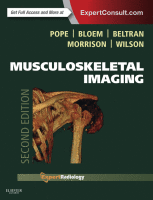Physical Address
304 North Cardinal St.
Dorchester Center, MA 02124

Mycobacterial Infection In the 1950s, the atypical mycobacteria were recognized as human pathogens. They are morphologically similar to Mycobacterium tuberculosis but have different colonial characteristics. Because there is no evidence of human-to-human transmission, the atypical mycobacteria do not pose public…

Human immunodeficiency virus (HIV) infection is almost universally fatal if left untreated, leading to and being the etiologic agent of the acquired immunodeficiency syndrome (AIDS). The HIV epidemic is prevalent worldwide and is constantly evolving, being influenced by geographic, socioeconomic,…

Introduction Musculoskeletal infections in children are relatively common occurrences. However, in the pediatric population, such infections may produce nonspecific clinical signs and symptoms and can occur in the absence of clinically apparent features, such as swelling and erythema. This diagnostic…

Introduction Etiology Although hematogenous spread is the most common cause of osteomyelitis in most other areas of the body, contiguous spread and direct implantation are the most common in the foot and ankle. Direct implantation can occur from puncture wounds…

Spinal Infection Etiology Spinal infection is a multicausal disease. The three most common are hematogenous spread, direct spread, and direct inoculation, which is usually iatrogenic. Arterial hematogenous spread can be due to an infectious focus anywhere in the body. This…

Osteomyelitis is infection of bone or bone marrow. It is usually caused by bacterial infection, less frequently by viruses and fungi and, rarely, parasites. It is subdivided into acute, subacute, and chronic stages, depending on the clinical presentation, which, in…

Infections of the soft tissues range clinically from indolent, low-grade conditions to fulminant disease that may be life-threatening within a matter of hours. A wide range of organisms can produce an infection, although there are common culprits. Clinical confusion may…

Pigmented Villonodular Synovitis Introduction Etiology Pigmented villonodular synovitis (PVNS) is a benign proliferative synovial disorder that can occur in a diffuse or localized form and in both intraarticular and extraarticular locations. Although PVNS typically occurs diffusely within a joint, nodular…

Neuropathy results from functional abnormalities or structural insults to the axons (sensory, motor, or combined), the myelin, or both. The insensate neuropathic joint is liable to arthrosis, fractures, alignment deformities, abnormal function, ulcer, and infection. Predilection for skeletal location is…

A number of crystals are associated with joint disease ( Fig. 61-1 ). The major culprits are calcium pyrophosphate dihydrate (CPPD) and hydroxyapatite (HA), a basic calcium phosphate (BCP). The focus in this chapter is on the disorders associated with…